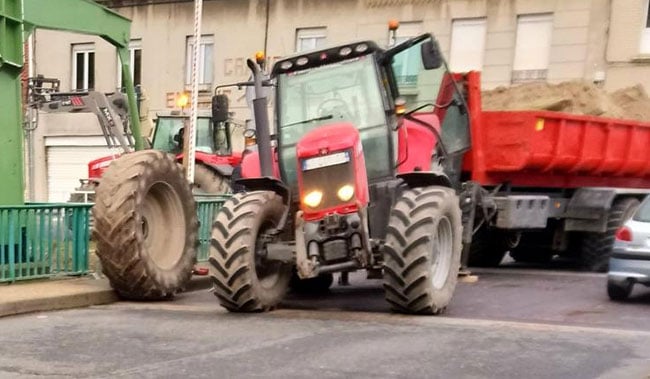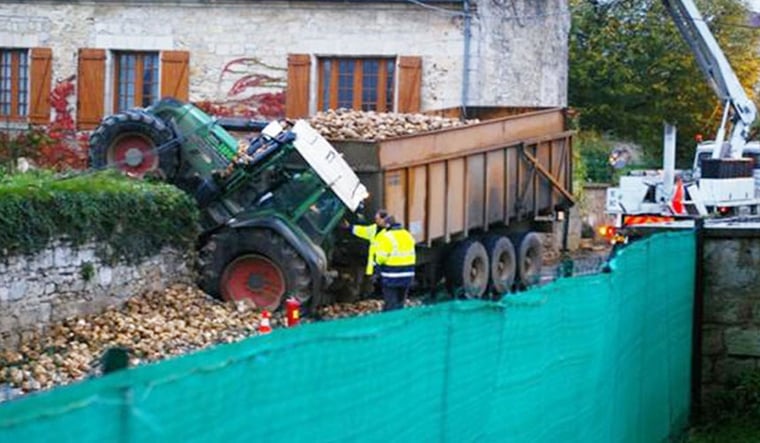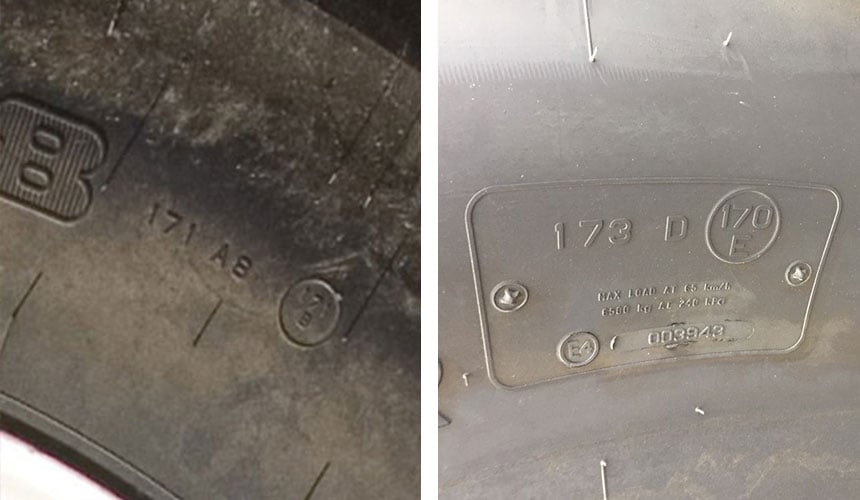Ensuring an even distribution of weight across your tractor tyres is essential if you want to work efficiently.
 Ensuring an even distribution of weight across your tractor tyres is essential if you want to work efficiently:
Ensuring an even distribution of weight across your tractor tyres is essential if you want to work efficiently:
 Your agricultural tyres are the only things connecting your tractor to the ground. If you overload your trailer or hitch mounted or semi-mounted tools that are too heavy, the weight of the tractor will crush the tyres.
Your agricultural tyres are the only things connecting your tractor to the ground. If you overload your trailer or hitch mounted or semi-mounted tools that are too heavy, the weight of the tractor will crush the tyres.
If the soil is hard, the tyre's lugs will bend under the tractive force, until they tear. The deformation due to compression will be lateral and affect the sidewalls, which are not designed to be subjected to so much force. This increases the risk of internal casing rupture.
There are many potential consequences, the least serious of which in the short term is soil compaction, which will gradually reduce your productivity. Extra cost will be the first visible consequence of overloading, as your tyres will wear down much quicker.
Driving on roads will definitely be more of a problem, because if you need to use the emergency brake and you're overloaded, your tyres might not be able to respond as expected and you could be put at significant risk.
It's often hard to determine the maximum weight your tractor tyres can endure with accuracy, so how can you be sure that you're not exceeding the maximum load that your tyres can handle?
What weight should you put in the front to offset the weight of the tool behind, without exceeding the load limit for your tyres?
These are answers you need to know if you want to avoid having to replace your tyres once a year.
The maximum load index is indicated on your tractor tyres, as a number usually between 75 and 190 along with a speed code that could either be a letter or a letter and a number (such as A1, A2, A8, B, C or G) that corresponds to a precise speed.

The tyre manufacturer should have provided you with an equivalence table so that you can see the exact weight for this index for any given speed. This weight is the maximum load per tyre that should never be exceeded.
The tyre mount originally supplied with your tractor is rarely the most efficient – it's usually just whatever's cheapest for the manufacturer.
So if your tools are heavy and you need to work in all weathers on soft or heavy terrain, the best choice would be to increase the diameter of your rear wheel to its maximum possible size. This will allow you to carry heavier loads because the volume of air contained in a tyre is proportional to the weight it can bear.
The total weight of the tractor and its mounted or semi-mounted tools exerts a force that presses down on your tyres. This force is then transferred to the ground and compacts the soil to a varying degree, depending on the inflation pressure of your tyres:
Weight is distributed based on your tyres' properties. If your tyres are all the same size, they will each be subjected to the same load.
For 2WD tractors, at least 20% of the tractor's total weight must be placed on the front tyres. This balance is necessary to guarantee the effectiveness of the steering shaft.
With an unequal 4WD tractor, the weight must be distributed 40% at the front and 60% at the rear. If a semi-mounted tool generates substantial load transfer on the rear wheels, you will need to rebalance the vehicle with extra weight on the front.
To learn more and boost your farm's profits, Bridgestone-agriculture is offering you a free, detailed eBook that explains the essential role your agricultural tyres play in your productivity.
The most people who have read this article have also read the following articles, which are listed below in order of popularity:
This information is intended only to make you aware of the technical and functional aspects of agricultural tires and their use. It does not allow you to make a judgment or a definitive conclusion on a given problem. Only your agricultural tire expert is able to make a technical assessment and take a final decision, case by case.

BRIDGESTONE EUROPE NV/SA
AG Department
Leonardo Da Vincilaan 1
1930 Zaventem | Belgium
Our regional office:
Athena Drive, Tachbrook Park
Warwick CV34 6UX
United Kingdom